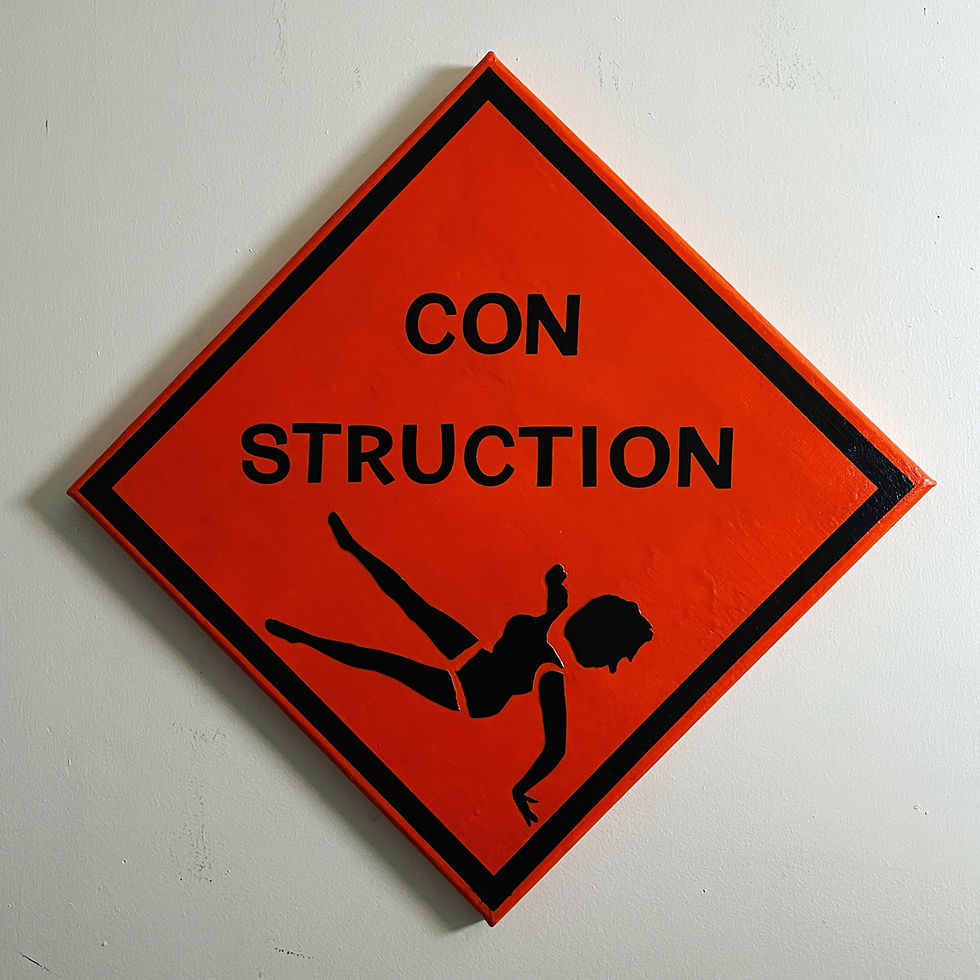Many Lives of Load-bearing by Edward Tsui
- Laura Thipphawong
- Aug 6, 2025
- 2 min read
Based in Toronto, Canada
Many Lives of Load-bearing, Cement, Steel Nails, Embroidery, Fabric particles, Acrylic Paints and Epoxy, 6"x6.3"x14.8", 2025

It has been a long journey of self-discovery in search of what the built environment conveys to the senses, or indeed, the psyche. This intuitive connection seems to recede from us as we grow older. After my formative years of graphic arts education and practice, I studied architecture and worked in this field for years. The architectural practice didn’t shape me into fixating on the mainstream aspirations of a glass and steel mindset. Instead, I was increasingly intrigued by buildings, regardless of whether they were primitive, old, mundane, or neglected, in the urban landscape, and how they interacted with people on a psychological level.
The built form, in an articulated urban context, may behave like a syncopation of sounds in an orchestra. However, in most urban jungles, buildings speak with an augmentation of incoherent voices, each one pleading for a different agenda. Their stories are not easy to hear. With their coldness of materials, empty spaces, and unassuming components, buildings communicate in coded languages that are only accessible to the primordial mind—something that is lost in us with the passage of time. Before long, I decided to leave architectural practice and began expressing my thoughts through visual arts.
My works dissect building archetypes, interior space, and urban fabric, breaking them down and re-emerging with heightened awareness. There is also an archaeological process of examining artifacts, learning behaviours, and reflecting on the human condition. While working on ideas, I actively engage in conscious unlearning regarding gravity, functionality, or institutionalized logic. These are knowledge domains that drown out my intrinsic responses.
To me, three-dimensional work can be confusing if not misleading when handled improperly. They do not necessarily conjure up better expressions. The layering of my three-dimensional works is not about dimensionality, but strata of ideas that interact and multiply among themselves. It is for this reason alone that leads me to create with length, breadth, and height.
This is one of my latest works that investigates a key constituent of buildings, namely columns. The images of work and writing may open up potential streams of thought or dialogues with the audience.
They appear in groups and are seen in solitude to mark venerable gestures. Columns rise, hold, and perhaps falter. They stand with resolve, are built for weight and endurance. But an objective is not a promise. Time weathers and purpose eludes with age.
A column’s strength may have its fragility foretold. This work examines the lives of columns as support and symbol—of vitality, permanence, and their flickering existences.
To immerse within and let water take over our eyes: it can be poured onto the pod and glide through the crevices to anoint the columns.









